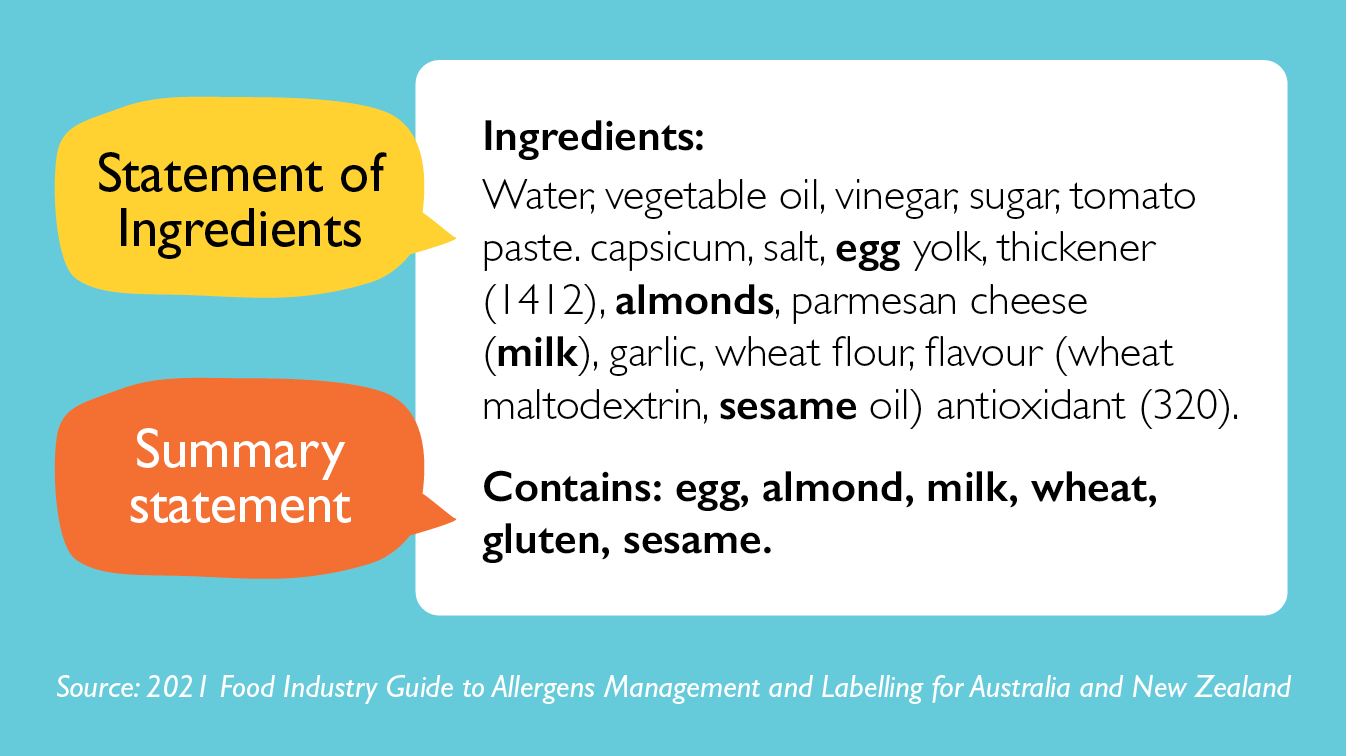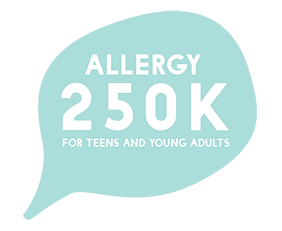Food Allergy and Packaged Foods
Top Tips
- Read packaged food labels every time, as lists of ingredients and food processing can change.
- Check and respect ‘may contain’ statements.
- When buying unlabelled food, disclose your food allergy and ask about food allergen content.
Always read the label
Food in Australia is required by law under the Food Standards Code, to display the most common allergens on its packaging.

These allergens must be declared if they are included as:
- An ingredient
- Part of a compound ingredient
- A food additive
- A processing aid
The Food Standards Code also requires that sulphites in concentrations of 10mg/kg or more must also be declared on food labels of packaged foods. Sulphites are listed because sulphites in food can trigger asthma symptoms in people with asthma.
NEW LABELLING LAWS IN AUSTRALIA
The new Plain English Allergen Labelling law means that the common names of food allergens must be listed on a food label. (e.g. the word egg rather than just the protein in egg which is albumin). Food companies need to make these changes by 2026, so up until then you will need to know how to read labels that comply with both the new and old laws. Allergy & Anaphylaxis Australia has Food Allergen Cards listing other words for the common allergens and foods the allergens may be in.
How to read food labels that meet the old Food Standards Code
Even though there is a change to the Food Standards Code in place, foods with labels that meet the old Code can still be available for up to 5 years.
The old Food Standards Code requires the following allergen information to be labelled and available to customers:
- peanut
- tree nuts, (e.g. almonds, cashews)
- egg
- cow’s milk (this includes all dairy foods)
- fish
- crustacea (e.g. prawns, lobster)
- sesame seeds
- soy/soybeans
- cereals containing gluten and their products, namely, wheat, rye, barley, oats, spelt and their hybridised strains (e.g. triticale)
- lupin
How to read food labels that meet the new PEAL law
Under the new PEAL law, ingredients are to be listed with the plain English name alongside the actual ingredient name.
In the statement of ingredients, declarations must:
- Be in bold font.
- Have bold font contrasting distinctly with other text.
- Have the same size font as other text.
The allergens must also be listed in a summary statement beginning with the word ‘contains’ next to the ingredient list. This could be above, below or on either side of the ingredient list.
Some other important changes under the new PEAL law include:
- The name of the specific tree nut (almond, Brazil nut, cashew, hazelnut, macadamia, pecan, pine nut, pistachio and walnut) to be included in the ingredients list and summary statement.
- The specific name of the cereal to be stated in the ingredients list and summary statement as either wheat, barley, oats or rye. ‘Gluten’ must appear in the summary statements whenever gluten from wheat, rye, oats or barley (or their hybrids) is present. The term ‘Cereals containing gluten’ cannot be used.
- Mollusc and crustacea are separate categories
While the transition to new labelling laws is taking place, make sure you check the packaging carefully because plain English names may not have been used yet.
More information about the Food Standards Code is available from the FSANZ website.
Confused about wheat and gluten?
- Some people find labelling about gluten and wheat confusing.
- Customers with wheat allergy need to avoid all wheat proteins, including gluten. They need to check if wheat is an ingredient rather than just gluten.
- People with coeliac disease need to avoid gluten. Gluten is found in wheat and several other grains including rye, barley, oats, spelt or their hybridised strains.
What about ‘may contain’ statements?
- Statements such as “May contain…” and “Made on equipment that also produces products containing…” are examples of precautionary allergen labelling statements.
- These statements are voluntary and not regulated by the Food Standards Code.
- They are often used to explain that during growing, storing and making the food, the product may have been unintentionally contaminated with an allergen and the product may be a risk to the person with food allergy because even small amounts of an allergen can trigger an allergic reaction.
- You should talk to your allergist about whether foods containing precautionary allergen statements should be eaten.
- If you would like more information about the level of risk, contact the manufacturer of the product for more information.
Reporting a reaction to packaged food
If you have an allergic reaction to a food after checking the ingredients list, it’s important to report your reaction to protect others.
Once you have managed your allergic reaction and recovered, you should report the reaction to the health department.
Information about who to contact and what to do is available from the Allergy & Anaphylaxis Australia website:
Reporting an allergic reaction

